Article by Protomold
Injection molded parts, for all their many shapes and sizes, all start out pretty much the same—as small plastic pellets. The base colors of those pellets vary somewhat depending on the resin, but they all fall somewhere on a monochromatic scale from clear through various shades of natural to black (see Figure 1). Turning those dull little pellets into the rainbow of colors that comes out of molding presses requires the addition of colorant, which can be a fairly simple or fairly involved process. The complexity depends on how picky you are about your color.
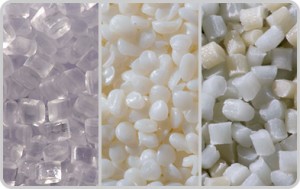
If all you want, for example, is “red,” Protomold can add a stocked colorant to your base resin at no charge (see Figure 2). In fact, you can have your choice of Cherry Red, Flame Red, or Transparent Red, among others, though the exact color you end up with may depend somewhat on the shade of the base resin. If you want to see all the choices we offer, go to Protomold stocked colorants. Of course, how closely the final color resembles the color you see on your screen may depend on the screen itself, but it will certainly be red. If, on the other hand, you want a very specific color, say the blue of your corporate logo or the color-matched cap of a spray-paint can, the process becomes more complicated.
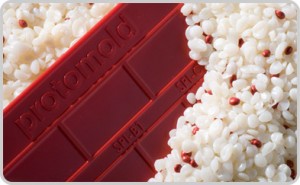
There are basically two ways to get colored injection molded parts. The simplest is to mix dye pellets into a batch of base resin pellets (see Figure 3). As the pellets are heated and compressed for injection into the mold, the base resin and dye pellets melt and mix together before being injected into the mold.
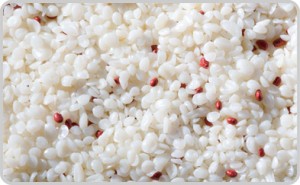
The other way is to order pre-compounded pellets in the exact color you want; for example, a standard PMS color or match to a sample swatch (see Figure 4).
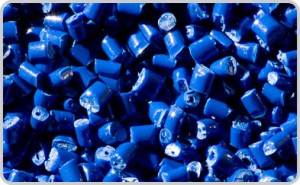
There are several things you should keep in mind if you choose to have Protomold add the colorant.
1. As stated above, Protomold does not match specific colors.
2. The effect of base resin shade on final color is greater on light colors. In a pre-compounded color, this can be adjusted for in the compounding process, but may be noticeable when you use Protomold’s stock colors.
3. Because dye pellets are mixed with base resin pellets in a “salt and pepper” mix, there is a chance of “swirling” in the resulting parts (see Figure 5). The degree of swirling depends on a number of factors. “Hot” colorants—red, orange, yellow—tend to exhibit a higher swirling risk than cool colors like blue and green. Also, large parts, because they use more of the contents of the chamber in which resin pellets are melted and mixed, are less likely to show swirling than small parts.
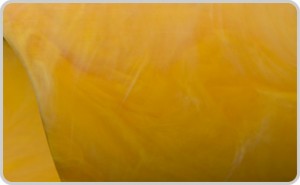
Choosing a pre-compounded resin would have helped the customer avoid this issue.
4. Unless you use pre-compounded colored resins, there is a risk of inconsistency from lot to lot and from part to part. This is one of the reasons that we recommend our standard ratio of three percent (3%) colorant (see Figure 6).
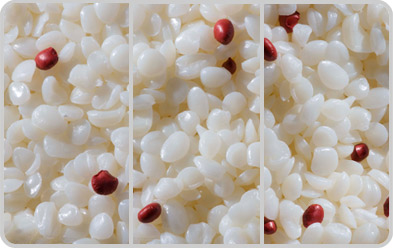
5. Certain base resins “don’t play well with others” when it comes to colorants. For these—high-temperature nylon and polycarbonate, for example—Protomold stocks a limited variety of resin-specific colorants. These allow you to achieve color but further limit your choice of hue.
6. Finally, certain resin characteristics—UV protection, flame retardant, and medical or food compatibility—can be affected by the choice of colorant. Protomold does not stock colorants specifically made to maintain these characteristics.
All of these problems have a solution: the use of pre-compounded resins purchased from specialized vendors. Pre-compounding consists of mixing colorant with base resin, melting and extruding the resin, re-pelletizing the resulting mix, and then repeating the process until a thorough mix is achieved. If necessary, the mix can be adjusted during the process to match the customer’s exact specifications. Vendors like RTP Plastics, PolyOne, Accek Color, Chase Plastic, and Compounding Solutions can match virtually any color in a wide variety of resins, and can preserve critical resin characteristics in the process (see full contact list below). Because the color is evenly distributed among the pellets, there are no issues of swirling or part-to-part inconsistency. Protomold can use these pre-compounded resins to produce parts, delivering all the benefits of rapid injection molding along with the exact color and characteristics you need.
In short, if you need approximate colors, for general appearance or any other reason, Protomold can provide a range of colorants at no charge. For specific colors, maximum consistency, and protection of specialized resin characteristics, outside vendors can provide the colored resins and Protomold can deliver the parts. If you have any questions, feel free to contact our Customer Service Engineers at 877.479.3680.
The views, opinions and technical analyses presented here are those of the author or advertiser, and are not necessarily those of ULProspector.com or UL Solutions. The appearance of this content in the UL Prospector Knowledge Center does not constitute an endorsement by UL Solutions or its affiliates.
All content is subject to copyright and may not be reproduced without prior authorization from UL Solutions or the content author.
The content has been made available for informational and educational purposes only. While the editors of this site may verify the accuracy of its content from time to time, we assume no responsibility for errors made by the author, editorial staff or any other contributor.
UL Solutions does not make any representations or warranties with respect to the accuracy, applicability, fitness or completeness of the content. UL Solutions does not warrant the performance, effectiveness or applicability of sites listed or linked to in any content.


